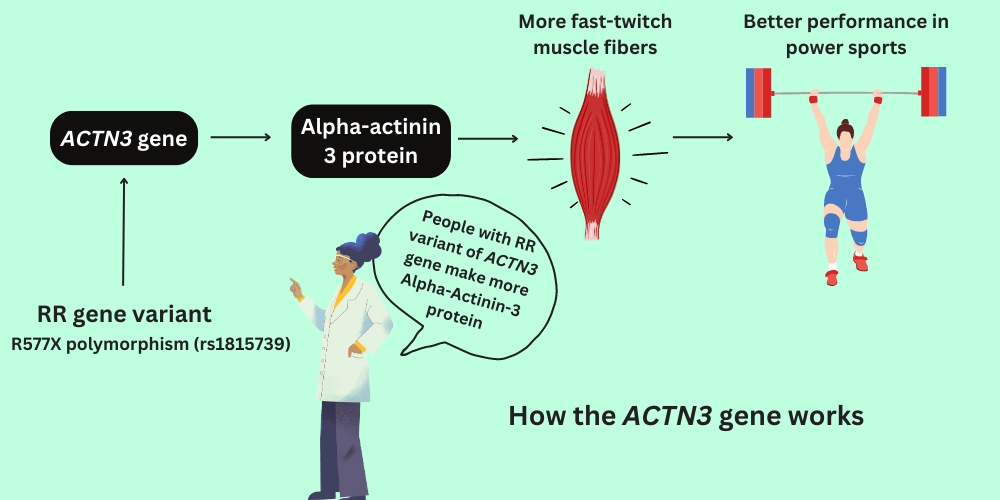Handgrip Strength: The Power In Your Hands

Table of Contents
What is Handgrip Strength?
Handgrip strength is a measure of the force exerted when you contract your hand muscles, typically assessed using a handheld dynamometer.
It serves as a potent marker of overall muscle strength and a predictor of various health outcomes.
Handgrip strength has associations with cardiovascular disease risk, cognitive functioning, and even longevity.
How Can You Test Handgrip Strength?
Handgrip strength testing is relatively straightforward.
It involves a handheld device known as a dynamometer, which measures the maximum isometric strength of the hand and forearm muscles.
The test usually involves squeezing the dynamometer as hard as possible with one hand, and the strongest of several attempts is recorded.
It’s crucial to use standardized procedures to ensure accurate and reliable results.
Which Genes Influence Handgrip Strength?
Genetics plays a significant role in determining handgrip strength.
Here are a few genes with reported associations:
ACTN3
The ACTN3 gene, also known as the “speed gene,” is known for its role in muscle performance and contributes significantly to muscle fiber composition and muscle strength.
This gene encodes a protein, alpha-actinin-3, found in fast-twitch muscle fibers used in high-power activities.

Research indicates that a variant in the ACTN3 gene (rs1815739) impacts an individual’s muscle power.
Those with the CC genotype are more likely to have higher muscle power, which may potentially translate to increased handgrip strength.
VDR
The VDR gene codes for the vitamin D receptor, which binds to vitamin D and helps in its function related to calcium absorption and muscle function.

Some research shows a relationship between VDR gene polymorphisms (rs2228570, rs1544410) and muscle strength.
Specifically, certain variants might be associated with lower muscle and grip strength.
This is possibly due to the role of vitamin D in muscle cell proliferation and differentiation.
IGF2
Insulin-like growth factor 2 (IGF2) is a gene that plays a crucial role in human growth and development, especially prenatal growth.
Some studies suggest that polymorphisms in the IGF2 gene may affect muscle mass and muscle strength.
One of these polymorphisms, rs680, could influence handgrip strength, with some variants potentially being associated with increased muscle growth and, thus, greater handgrip strength.
MSTN
Myostatin (MSTN) is a gene that provides instructions for making a protein that inhibits muscle cell growth and differentiation.
Variations in the MSTN gene can affect muscle mass and composition, which can impact strength.
For instance, the rs1805086 SNP in the MSTN gene, linked with lower levels of myostatin, has been associated with increased muscle mass and could potentially affect handgrip strength.
TRHR
The thyrotropin-releasing hormone receptor (TRHR) gene has been associated with muscle strength in some studies.
The thyrotropin-releasing hormone signals the release of thyroid hormones, which can impact metabolism and muscle control.
Variations in this gene could potentially affect handgrip strength.
Non-genetic Factors that Influence Handgrip Strength
Non-genetic factors also have substantial impacts on handgrip strength.
These include age, gender, body composition, and physical activity levels.
Lifestyle factors like nutrition and resistance training can also influence handgrip strength.
Age and Sex
Studies show that handgrip strength tends to peak between the ages of 25 and 39, and gradually declines thereafter.
Sex also plays a role, with men typically having greater handgrip strength than women due to higher muscle mass.
Physical Activity and Training
Regular physical activity, particularly resistance and strength training, can significantly improve handgrip strength.
This is because these types of exercises increase muscle power and endurance.
Nutrition
A diet rich in protein and essential nutrients helps to build muscle strength, including handgrip strength.
Ensuring adequate intake of these can support the growth and maintenance of muscle tissue, enhancing strength.
Occupational Factors
Occupations that require regular use of hand and finger muscles, such as manual labor or playing musical instruments, often correlate with increased handgrip strength.
Psychological Factors
Mental health factors like stress and depression can indirectly affect handgrip strength by influencing a person’s motivation to engage in physical activity or maintain a healthy lifestyle.
How Can You Improve Handgrip Strength Based on Your Genes?
Improving handgrip strength involves targeted exercises and lifestyle modifications.
Training and Exercise
ACTN3 Genotype:
For individuals with the ACTN3 CC genotype, you are more likely to benefit from high-power, explosive exercises due to the presence of the alpha-actinin-3 protein in your fast-twitch muscle fibers.
Hence, strength training that involves fast, explosive movements like kettlebell swings, Olympic lifts, and plyometrics can help improve your handgrip strength.
VDR Genotype:
If you have certain variants of the VDR gene, you may have reduced muscle strength. In this case, consistent strength training and grip-enhancing exercises like farmers’ walks, deadlifts, and wrist curls could be beneficial.
Nutrition and Supplementation
VDR Genotype: As the VDR gene is involved in the function of vitamin D, maintaining adequate vitamin D levels through diet or supplementation might be essential, especially if you have variants associated with lower muscle strength. Foods high in vitamin D include fatty fish, cheese, egg yolks, and fortified foods.
IGF2 Genotype: Depending on your IGF2 genotype, you may benefit from a protein-rich diet to promote muscle growth. Include lean meats, dairy, eggs, and plant-based proteins in your diet.
Lifestyle Choices
TRHR Genotype:
Given that variations in the TRHR gene could potentially affect handgrip strength due to their role in thyroid hormone release, maintaining a lifestyle that supports healthy thyroid function might be beneficial.
This can include managing stress levels, ensuring adequate sleep, and avoiding excessive intake of goitrogenic foods (like raw cruciferous vegetables) that can interfere with thyroid function.
Remember that while your genes might predispose you to certain traits, they do not guarantee a specific outcome.
A combination of lifestyle choices, training, and nutrition can significantly influence the phenotype.
Have Amazing Handgrip Strength? Here Are Some Sports to Explore
Handgrip strength is beneficial in sports requiring powerful hand and forearm muscles, such as rock climbing, martial arts, tennis, and weightlifting. If you’ve got a strong grip, these sports could be an excellent fit!
Sports Stars with Amazing Handgrip Strength
These sports stars all showcase impressive handgrip strength, reflecting a combination of their genetics, training regimes, and dedication to their respective sports.
Hafthor Bjornsson
Known as “The Mountain” from Game of Thrones, Hafthor Bjornsson, a professional strongman, is famous for his extraordinary handgrip strength.

In fact, he holds the world record for carrying a 1,433-pound log in five steps.
Bjornsson’s strong grip is a testament to his weight training regime and genetic makeup.
Magnus Midtbø
A professional rock climber from Norway, Magnus Midtbø, has one of the most impressive grips in the sport.

His ability to cling onto minute rock edges and lugs himself up vertical terrains with his fingers is a spectacle of handgrip strength.
Midtbø’s grip is a product of years of climbing and specific finger strength training.
Phil Pfister
Former World’s Strongest Man, Phil Pfister, was known for his incredible handgrip strength.

He could deadlift nearly 1,000 pounds, showcasing his powerful grip.
Pfister’s robust grip was essential for his career in strongman competitions, which often feature grip-intensive events.
Ronda Rousey
Former UFC Champion Ronda Rousey has an exceptionally strong grip, vital for her martial arts career.

Rousey’s grip strength is a combination of her judo training, where a strong grip on the opponent’s uniform is essential, and her genetic predisposition.
- What is handgrip strength? Handgrip strength is a measure of the force exerted when you contract your hand muscles. It’s a marker of overall muscle strength and has associations with various health outcomes.
- How can I test my handgrip strength? Handgrip strength can be tested using a handheld device known as a dynamometer.
- Are there genes that influence handgrip strength? Yes, several genes, including ACTN3, VDR, and IGF2, are known to influence handgrip strength.
- Can I improve my handgrip strength based on my genes? Yes, targeted exercises and lifestyle modifications can help improve handgrip strength. Your specific genetic makeup can determine which strategies might be most effective.
Cited Work
- North KN, et al. (1999). A common nonsense mutation results in alpha-actinin-3 deficiency in the general population. Nature Genetics
- Windelinckx A, et al. (2011). Vitamin D receptor gene haplotype is associated with body height and bone size. Journal of Clinical Endocrinology & Metabolism
- Ben-Zaken S, et al. (2015). Genomic ancestry and IGF2BP1 polymorphism modulate IGF2 gene expression and body composition in women. European Journal of Applied Physiology
- Schuelke M, et al. (2004). Myostatin mutation is associated with gross muscle hypertrophy in a child. The New England Journal of Medicine
- Willems SM, et al. (2017). Large-scale GWAS identifies multiple loci for hand grip strength providing biological insights into muscular fitness. Nature Communications
Written By
Share this article












